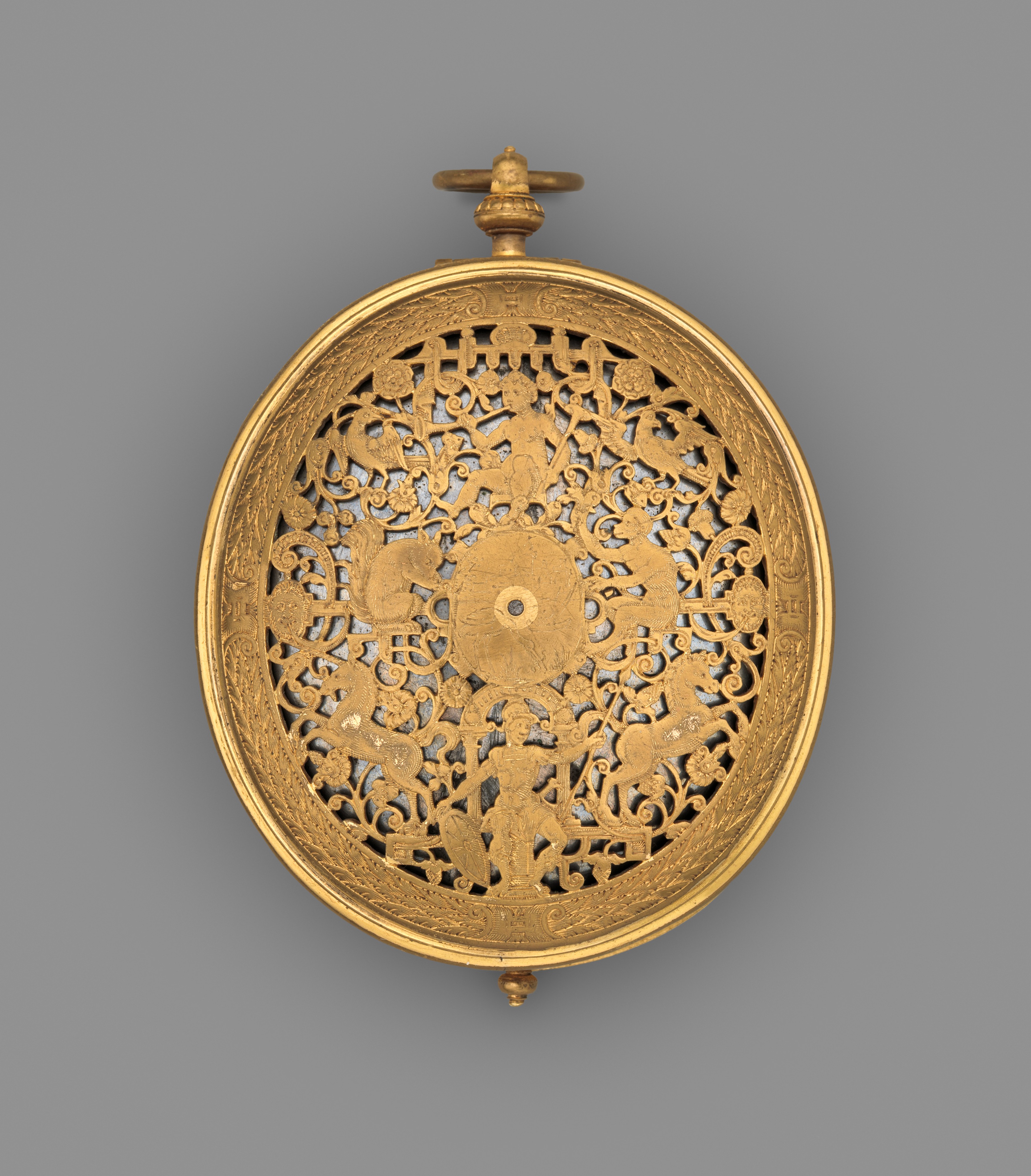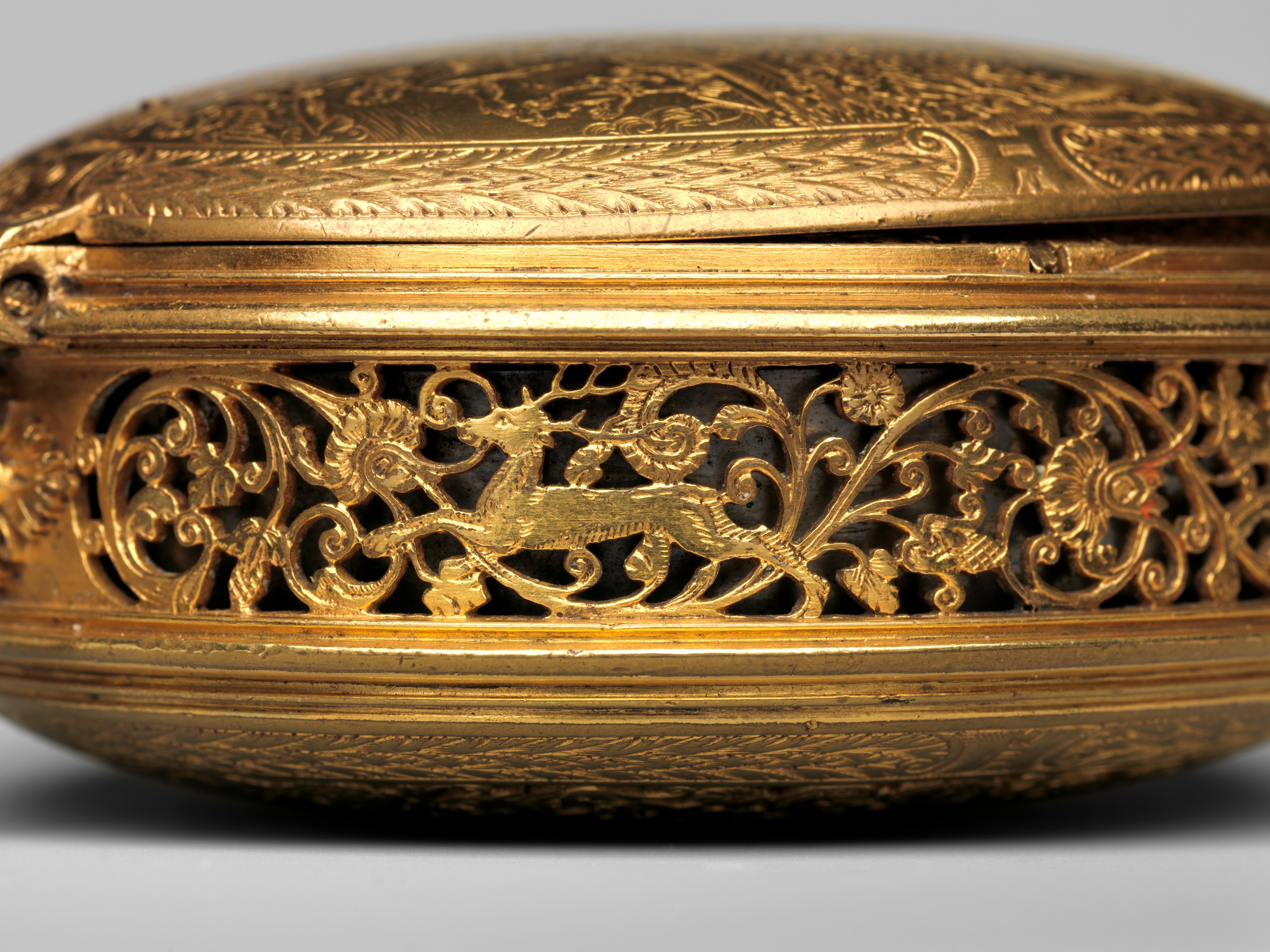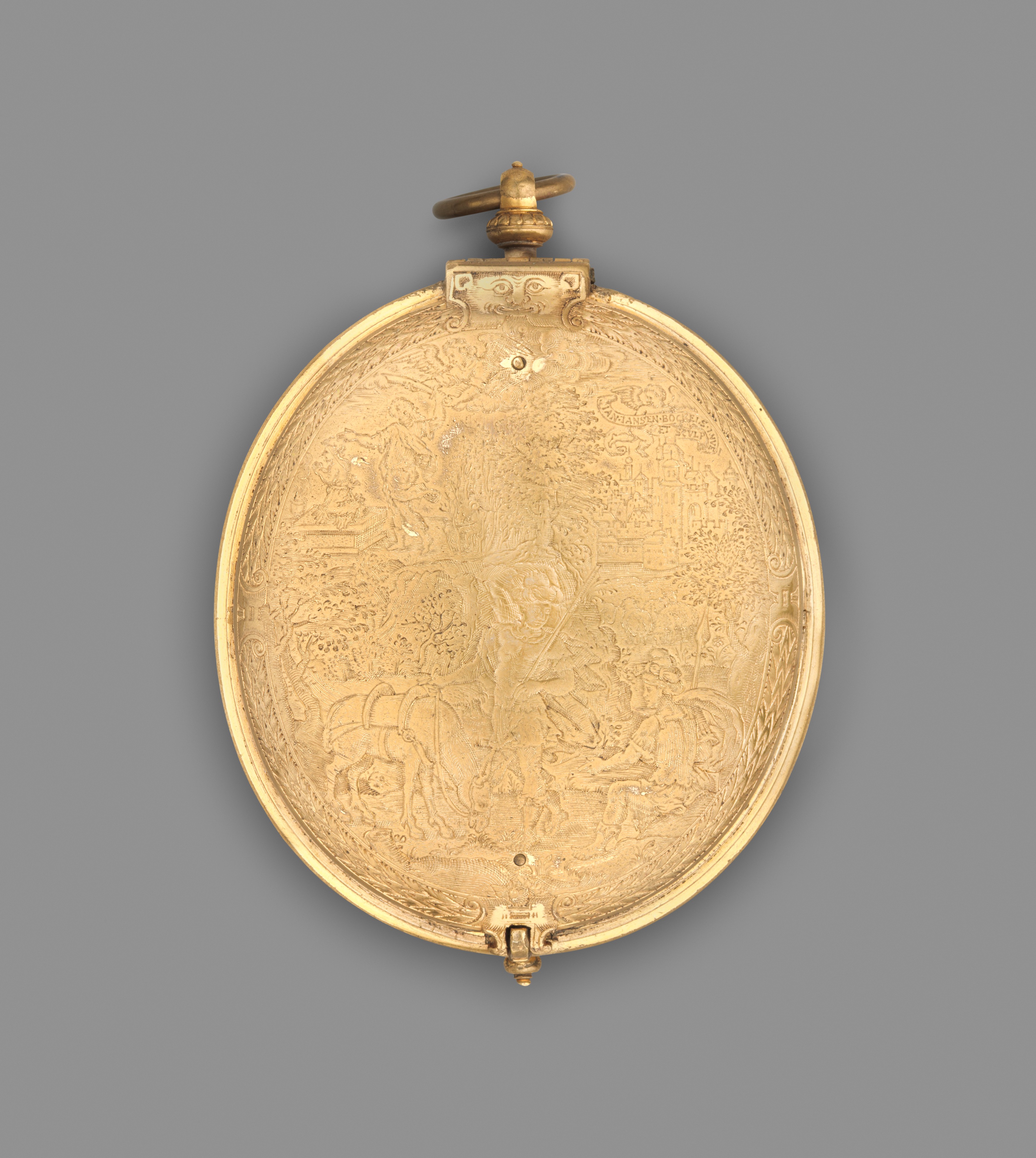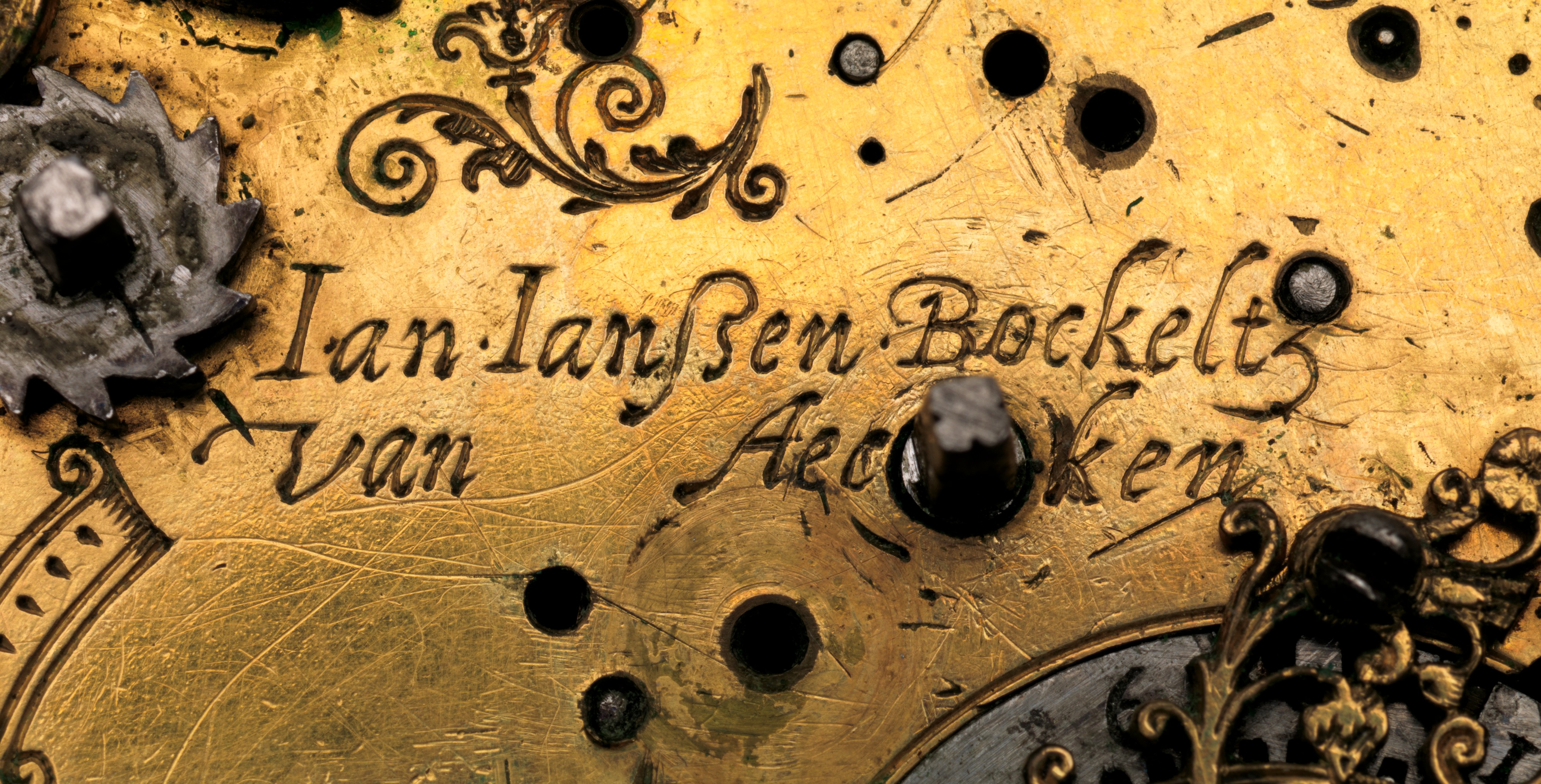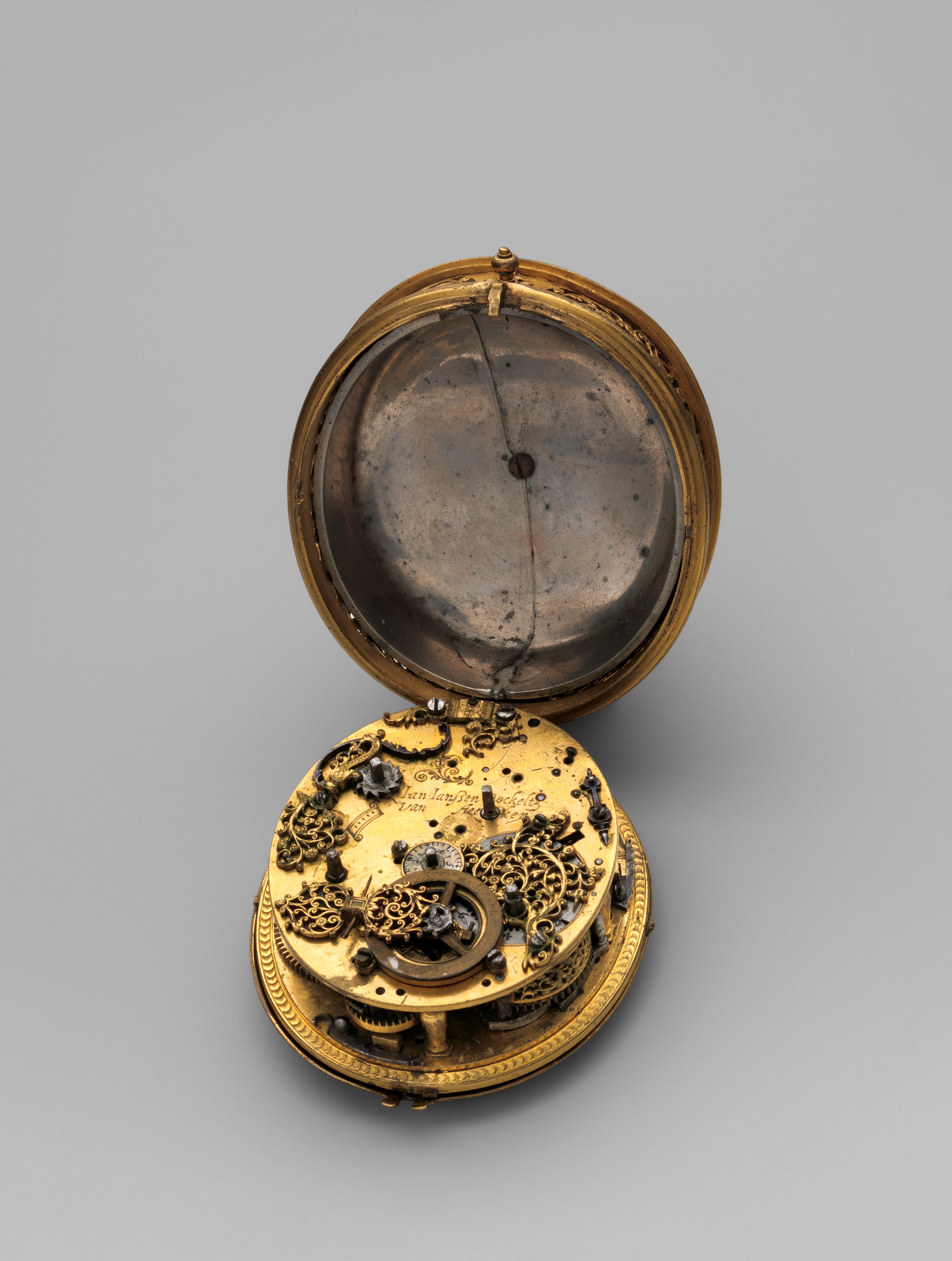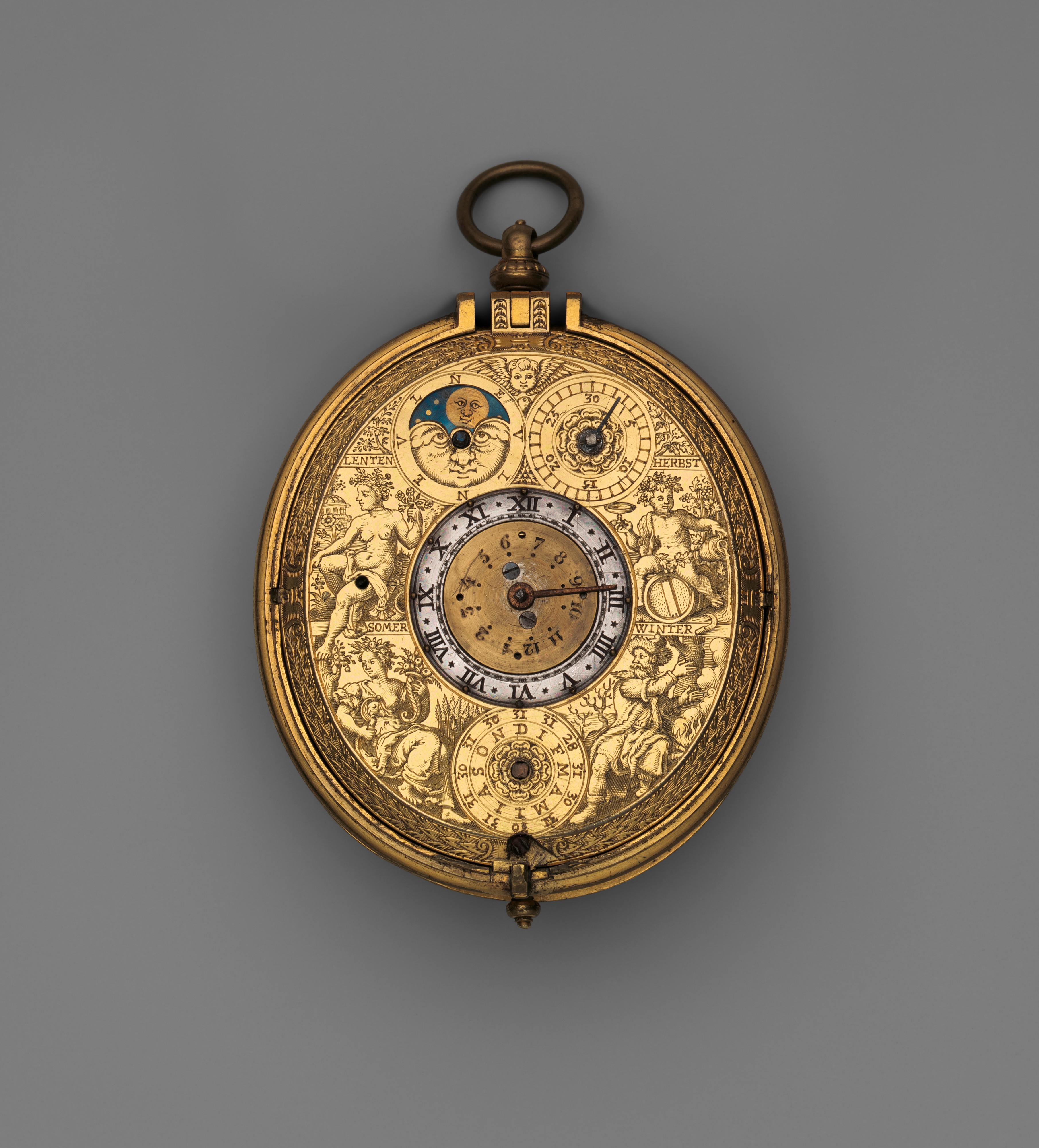Clock-watch with sundial
Watchmaker: Jan Jansen Bockeltz Dutch
Studded with eighty-five clear rubies, encased in rock crystal, or concealing a gilded brass sundial, these three watches—German, French, and Dutch, respectively—exemplify the commodification of time into portable objects communicating great wealth, virtuoso craftsmanship, and the vicissitudes of style. The so-called Great Ruby Watch (17.190.1520), produced by Nicolaus Rugendas, a member of a prominent family of clock- and sundial makers in Augsburg, is a fine example of the florid designs of Augsburg goldsmiths from about 1660 to 1680. The Vernede watch (17.190.1579) is distinguished by its cosses de pois (peapod) ornament in enameled gold mount, a motif found also in a sixteenth-century print by Hans Leinberger.[1] Its crystal cover, sourced from deposits in the Alps, would have amplified the ornament on the watch’s interior face and was manufactured separately by specialist lapidary crafts-men before being integrated into the final composition.
A Gesamtkunstwerk in miniature, the Bockeltz clock watch (17.190.1603), most likely made in either Aachen or Haarlem, was designed to be admired from every angle.[2] The front dial plate is engraved with personifications of the four seasons, themselves adapted from engravings by Crispin van de Passe the Elder after designs by the Flemish artist Maarten de Vos the Elder.[3] The internal watch movement, exposed by unclasping the back of the watch, was fabricated in openwork gilded brass, partly blued steel, and silver. Taken together, the front and back of the watch perform the traditional dichotomy between the sensorial world of human perception and the invisible clockwork mechanisms understood to regulate a universe in the terms of an increasingly mechanistic natural philosophy. NA
Footnotes
(For key to shortened references see bibliography in Koeppe, Making Marvels: Science & Splendor at the Courts of Europe: The Metropolitan Museum of Art, 2019)
1. For the cosses de pois motif, see Fuhring and Bimbenet-Privat 2002, pp. 5–7. For the Leinberger print, as well as an extended exposition on the Vernede watch,
see Vincent and Leopold 2015, pp. 58–61.
2. On Bockeltz, see Thompson 2007, pp. 14–15; Thompson 2008, pp. 22–23.
3. Vincent and Leopold 2015, p. 48. For the Bockeltz clock-watch generally, see Vincent and Leopold 2015, pp. 44–49. For the print references for the four allegories, see Hollstein 1995–96, vol. 44 (1996), pp. 282–83, nos. 1420–23, and vol. 46 (1995), pp. 210–11, pls. 1420–23.
Due to rights restrictions, this image cannot be enlarged, viewed at full screen, or downloaded.
This artwork is meant to be viewed from right to left. Scroll left to view more.


